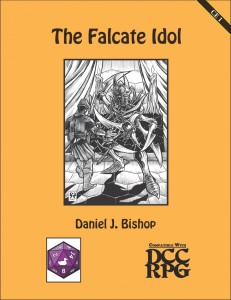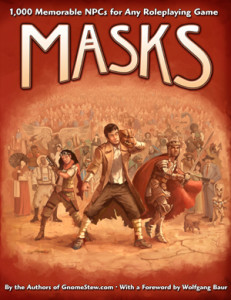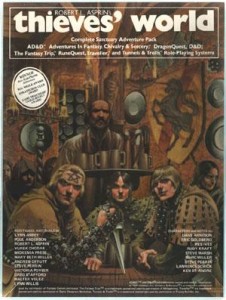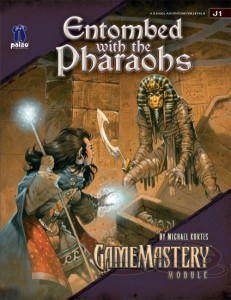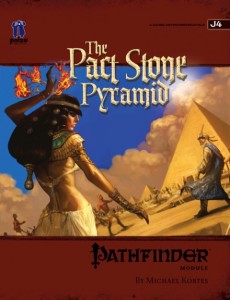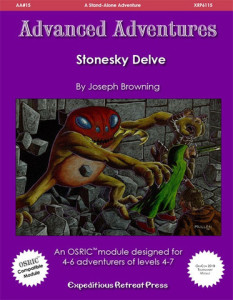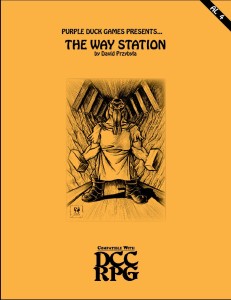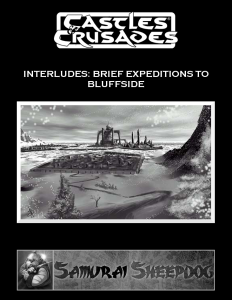 Author: Daniel J. Bishop
Author: Daniel J. Bishop
Publisher: Purple Duck Games
Art: Luigi Castellani
Price: PDF $2.50 – at RPGNow / at d20pfsrd.com / Paizo.com
Pages: 12 (incl. cover)
The Black Goat is the second release in the Campaign Elements line for the Dungeon Crawl Classics RPG. The Campaign Elements series is designed to be run with minimum preparation by the judge and provide “quest for it” areas. Whether your wizard needs a spell component or to be taught a certain spell, a rare metal or element for the crafting of a wondrous magic item, or maybe just a way to restore some ability damage, the Campaign Elements series from Purple Duck Games aims to fill this niche.
The PDF is 12 pages long including the cover and the OGL license information on the last page. A map of the mountain pass is included helping depict the gate system the pass residents have here. A rumor table covers twenty different rumors about the mountain pass and its inhabitants. In addition to eight encounter areas there is also a patron write-up for the Black Goat, this includes invoke patron checks, patron taint results, spellburn results, and a new patron spell, Silence. There is also a short section on getting the most out of the adventure with suggestions on expanding certain elements of the area.
The encounter area centers around a mountain pass that can be dropped into any hilly or mountainous region of a campaign world. The pass has been known as the Pass of the Black Goat, taking the name from a sphinx-like creature living in the pass.
The Black Goat is a spellcaster who could be a patron to a PC wizard or simply provide a resource for spells or other pieces of knowledge. A creative judge could find many ways to work the Black Goat into their campaign beyond the ideas suggested.
There are two factions of races that live in and near the pass. One race controls the gates of the pass, while the other group lives just beyond the pass. The factions do not get along with each seeking to control the pass. This friction between factions creates a wonderful backdrop for plots within a campaign.
The Review
I am once again quite satisfied with the direction the Campaign Elements line is taking. The Black Goat can easily spice up a mountain pass in a campaign or the Black Goat itself can be used as a source of knowledge or ability in “quest for it” situations. The two factions in the area provide several ideas for a DCC RPG judge to work with to weave this encounter area into their own campaign world.
I know in my current DCC RPG campaign I wrote my own adventure to handle some travel the party needed to do at the time. Looking back I could easily see this encounter area as filling that need with much less work on my part! I really like products that are so easy to plug and play into a campaign world. It does a lot to make my job as a judge easier from week to week.
Essentially, from this short 12 page PDF I get a detailed mountain pass, two rival factions, a patron-type figure, and a patron write-up. This can all be used as a whole or in parts by the enterprising judge.
The Black Goat proves the Campaign Elements line is off to a great start. I see this series a wonderful time-saver for the busy judge and is giving the opportunity to finally adequately provide some “quest for it” options to my players. If you run a Dungeon Crawl Classics game, you should definitely be keeping an eye on this series.

